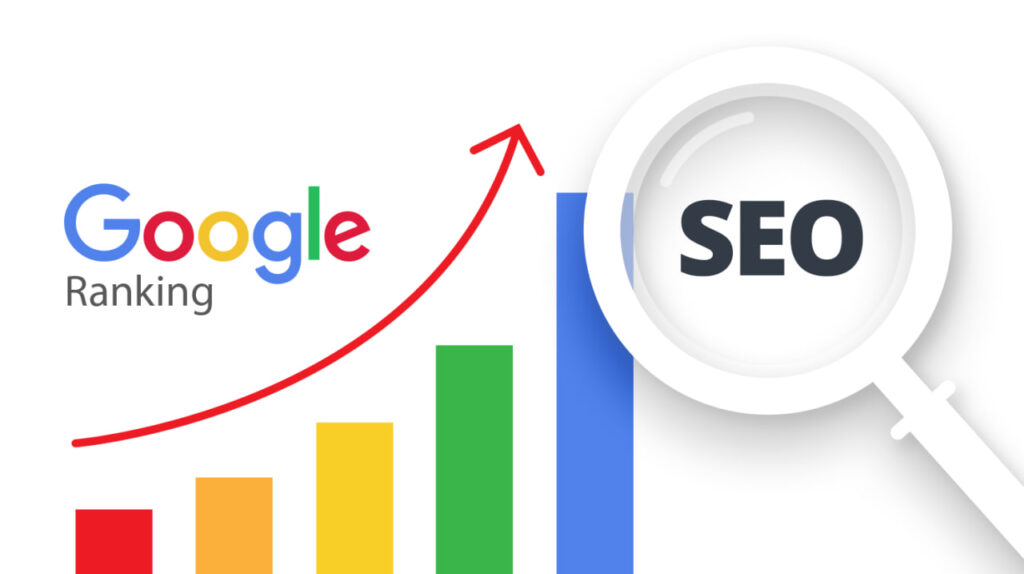In the world of digital marketing, visibility is key. Without it, your website or business risks getting lost in the vast ocean of online content. Google, the world’s dominant search engine, plays a central role in determining that visibility. With over 90% of the global search engine market share, mastering how Google works with SEO (Search Engine Optimization) is crucial for any digital marketing strategy.
But how can you ensure that your content gets noticed by Google—and more importantly, by the right audience? In this article, we’ll explore how to align your digital marketing efforts with Google’s SEO principles to maximize visibility and drive meaningful traffic to your site.


Understanding Google’s Role in SEO and Digital Marketing
At its core, SEO is about making your content more accessible and relevant to search engines, and Google is the most important search engine to focus on. Google’s primary goal is to provide users with the most relevant, high-quality, and useful content based on their search queries. This is done through complex algorithms that analyze various factors to determine the ranking of web pages.
When Google crawls the web, it evaluates numerous elements of a webpage to assess its quality, relevance, and user experience. These factors include:
- Keywords: Relevant terms that users are likely to search for.
- Backlinks: Links from other authoritative websites pointing to your content.
- Content Quality: The depth, usefulness, and uniqueness of the content.
- User Experience (UX): It is easy for users to navigate and engage with your website.
- Page Speed: How fast your site loads, especially on mobile devices.
Considering this, aligning your digital marketing strategy with Google’s ranking factors is critical for gaining visibility in search results.
Key Strategies to Align Your Digital Marketing Strategy with Google SEO
1. Keyword Research: The Foundation of SEO and Visibility
To ensure that your content is visible to the right audience, you need to know what they’re searching for. Keyword research helps you identify the terms and phrases your target audience uses when looking for products, services, or information related to your business. These keywords are the foundation of your SEO strategy.
- Start with intent: Google increasingly prioritizes search intent—the reason behind a search query—over exact keyword matches. Understanding whether users are looking for information, services, or products can help you craft content that addresses their needs.
- Use keyword research tools: Tools like Google Keyword Planner, SEMrush, or Ahrefs can help you find popular and relevant keywords for your niche.
- Long-tail keywords: Focus on long-tail keywords, which are more specific phrases that tend to have lower competition but higher conversion potential. For example, instead of targeting “digital marketing,” aim for “digital marketing strategies for small businesses.”
By strategically using these keywords in your content, titles, meta descriptions, and headers, you help Google understand your content’s relevance and increase your chances of ranking higher for those search queries.
2. Create High-Quality, Engaging Content
Content is the heart of SEO. To rank well with Google, you need to create content that is not only keyword-optimized but also engaging, informative, and valuable to your audience. Google rewards websites that provide high-quality content that satisfies users’ needs.
- Write for your audience: Focus on answering users’ questions and solving their problems. Google’s algorithms favor content that provides useful, informative answers to search queries.
- Use clear headings and subheadings: Break your content into digestible sections with relevant headings (H1, H2, etc.) that help both Google and users navigate the information.
- Optimize for featured snippets: Featured snippets are concise answers that appear at the top of search results. Craft your content to answer questions directly and in a format that is easy for Google to extract.
- Keep content updated: Regularly update old posts with fresh information. Google favors up-to-date content, especially in dynamic industries.
The more relevant and comprehensive your content, the better your chances of ranking higher and appearing in Google’s featured snippets, knowledge panels, and other high-visibility positions.
3. Improve User Experience (UX) for Better Rankings
Google cares deeply about the user experience (UX). If users land on your website and quickly leave because the page is slow, difficult to navigate, or provides little value, Google will take note and penalize your site’s rankings.
- Responsive design: Ensure your site is mobile-friendly. Over 50% of searches are now done on mobile devices, and Google uses mobile-first indexing, meaning it ranks websites based on their mobile versions first.
- Page speed: Slow-loading pages frustrate users and hurt your rankings. Use tools like Google PageSpeed Insights to check your website’s load times and optimize images, scripts, and other elements to speed things up.
- Easy navigation: A clean, intuitive layout makes it easier for users to find what they need and stay longer on your site.
- Clear call-to-action (CTA): Guide users toward taking actions that benefit your business, whether it’s signing up for a newsletter, making a purchase, or downloading a resource.
In short, delivering a seamless, enjoyable experience for visitors not only helps with SEO but also improves conversion rates.
4. Optimize for Local SEO
If you have a local business, Google’s local search algorithms are key to reaching nearby customers. Local SEO optimizes your website to show up in local search results when users look for businesses or services near them.
- Claim your Google My Business listing: This free tool allows you to manage your business’s information, such as location, hours, and contact details, and it appears in local search results and Google Maps.
- Local keywords: Include location-based keywords in your content (e.g., “digital marketing agency in New York”).
- Encourage reviews: Positive customer reviews can improve your local SEO ranking. Google considers reviews and ratings as signals of credibility and trustworthiness.
Google’s local search algorithm is highly sophisticated and prioritizes businesses that provide accurate, consistent, and relevant local information.
5. Build High-Quality Backlinks
Backlinks—links from other authoritative websites to your content—are one of the most powerful ranking factors in SEO.
- Focus on quality over quantity: A few high-quality backlinks from authoritative sites in your niche are more valuable than dozens of low-quality links.
- Guest posting: Contribute guest articles to respected industry websites and include links to relevant pages on your site.
- Content that earns links: Create in-depth, shareable content like infographics, original research, or case studies that naturally attract backlinks from other sites.
Building a strong backlink profile helps Google see your site as authoritative, which can improve your rankings and visibility.
Aligning SEO with Your Digital Marketing Strategy
Aligning your digital marketing strategy with Google’s SEO principles is essential for maximizing visibility, attracting the right audience, and ultimately driving business growth. By focusing on keyword optimization, high-quality content, user experience, and backlink building, you can ensure that your website ranks higher in Google’s search results, increases traffic, and improves conversion rates.
SEO is not a one-time fix—it requires continuous attention and adaptation to stay ahead of Google’s ever-evolving algorithms. By following best practices and staying up-to-date with SEO trends, you can build a sustainable digital marketing strategy that leverages Google’s powerful search capabilities to your advantage.
Recommendation: SELIR DPR STORY
Recommendation: KPOP NEWS ASIA


